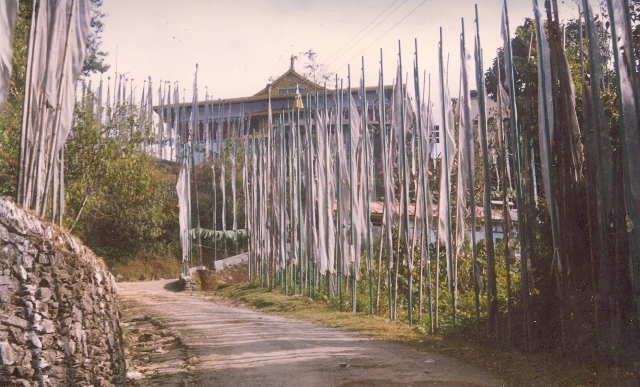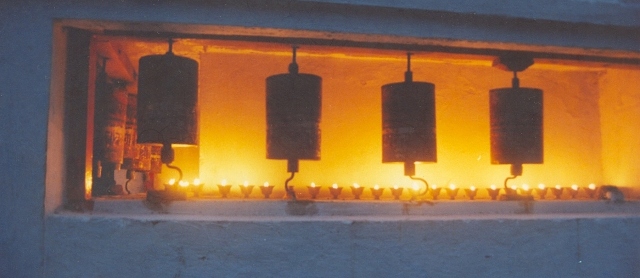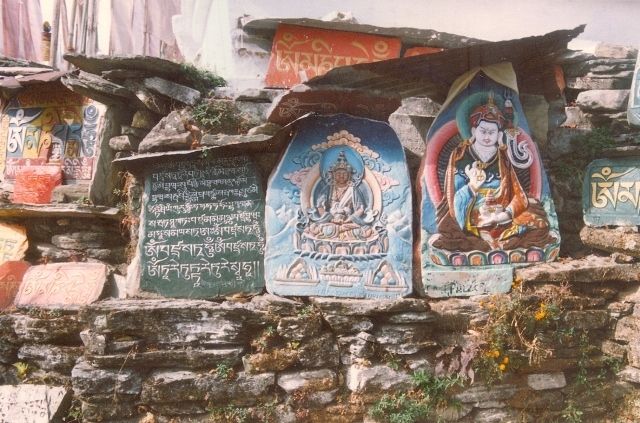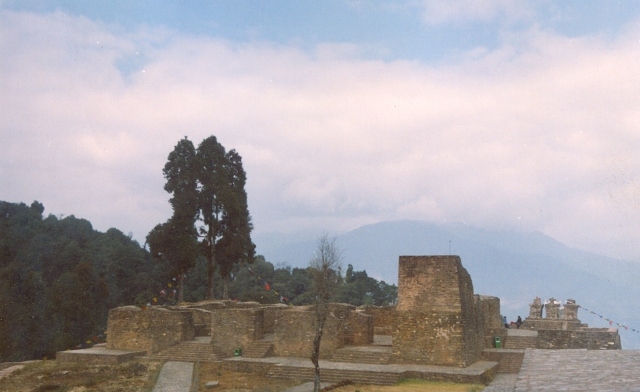| Travel: Fascinating land - West Sikkim...
Rangan Datta discovers that West Sikkim has something for everyone ~ from the curious historian to pious pilgrim, from the passionate adventurer to nature lover.
From ruined castles to hot springs and from holy caves to ancient coronation site, this is West Sikkim, a place which has something to offer for everybody; right from the curious historian to pious pilgrim and from the passionate adventurer to worshipper of nature.
My trip to West Sikkim started off with a visit to the cave of Khadosangphu, considered as one of the four holy caves of Sikkim. They are located in the four directions of the compass and Khadosangphu, (‘Cave of occult fairies’) lies in the south. I started from Siliguri in a jeep bound for Jorethang, the entry point of west Sikkim. After changing jeeps I got down at Tatopani from where a steep trail led me to the banks of River Rangit.
 Crossing the river on a rickety bamboo bridge I finally reached the holy cave; located next to it is a hot spring whose waters are said to have magical healing powers. The entrance of the cave is broad but turns into a narrow tunnel leading to a small opening housing a Buddhist deity. It was a relief crawling out of the tunnel. I soon submerged myself in the comfort of the bubbling sulphur rich water beside the river. Crossing the river on a rickety bamboo bridge I finally reached the holy cave; located next to it is a hot spring whose waters are said to have magical healing powers. The entrance of the cave is broad but turns into a narrow tunnel leading to a small opening housing a Buddhist deity. It was a relief crawling out of the tunnel. I soon submerged myself in the comfort of the bubbling sulphur rich water beside the river.
The next morning I headed for Tashiding, famed for its monastery. After an hour’s journey I was welcomed at Tashiding with the holy “On Mahi Padme Hum” (meaning “Hail the Jewel in the Lotus”). I headed for the monastery located on a hilltop overlooking the town. It was built in 1717 by Ngadak Sempa Chembo during the reign of the third Chogyal (King) Chakdor Namgyal and contains some of the most beautiful stone carvings in entire Sikkim.
It was a beautiful walk through a canopy of trees, past lovely houses and with multi-coloured prayer flags fluttering in the air. The monastery complex houses a number of richly decorated temples, several stupas dedicated to different Chogyals and holy men, but the main attraction is the innumerable coloured stone tablets carved with holy text and pictures of Buddhist deities. The complex also houses a workshop where master craftsmen turn ordinary stone into masterpieces. It was time to head back and following the trail to the road I took a jeep to Yuksam where I spent the night.
 Next it was time to visit the greatest historical site of Sikkim. History says that around the middle of the seventeenth century the great Lama Lutsum Chembo travelled southwards from Tibet with the mission of establishing a Buddhist monarchy in the hidden country of Denjong (modern day Sikkim). Next it was time to visit the greatest historical site of Sikkim. History says that around the middle of the seventeenth century the great Lama Lutsum Chembo travelled southwards from Tibet with the mission of establishing a Buddhist monarchy in the hidden country of Denjong (modern day Sikkim).
After a long journey he reached Norbugang in 1642 where he met with two other holy men: Sempa Chembo and Rinzing Chembo. These three holy men had a mission to establish a Buddhist monarchy in the land, which was made up of small clans. But whom should they choose as monarch? A search party finally found the right candidate from nearby Gangtok: Phunstok the great grandson of the legendary hero Guru Tashi. Phunstok was rushed to Yuksam and there on a stone throne the three great lamas crowned him king of Sikkim. He was given the title of “Chogyal” the king who rules with righteousness and surname “Namgyal.” The place was renamed Yuksam, (‘meeting place of the three superior ones’). The stone throne can still be seen in Yuksam and is known as Throne of Norbugang.
Early next morning I headed for Dubdi Monastery, built in 1701 and oldest in Sikkim (though historical opinions differ). The monastery located on a hilltop can be reached in about 40 minutes following a beautiful trail through the woods. The small elegant monastery houses some beautiful paintings and works of art.
 After getting back to town it was time to visit the Throne of Norbugang. It is maintained by the Archaeological Society of India (ASI) and is a monument of national importance. After getting back to town it was time to visit the Throne of Norbugang. It is maintained by the Archaeological Society of India (ASI) and is a monument of national importance.
The stone throne consists of four seats: the top one was meant for Lama Lutsum Chembo, the slightly lower one on the right was for Punstok the newly crowned Chogyal of Sikkim and the two lower seats on the left were for the other two great lamas. The coronation took place under a pine tree, which exists to this day. Just opposite the throne is a ‘chorten’ (stupa), said to contain water and soil from all over Sikkim.
It was time to bid farewell to the first capital of Sikkim. I then headed for the holy lake of Khechepari. The two places are connected by a picturesque trail passing through beautiful wooded country, past scattered villages with terraced fields and across a huge suspension bridge. I reached Khechepari late evening and settled in the comforts of the lone trekker’s hut there. After a sound night’s sleep it was time to explore one of the holiest lakes of Sikkim. The crystal clear lake is surrounded by dense vegetation and legend has it that if a leaf falls on the lake, a bird picks it up immediately. It was early morning and I had the lake all to myself.
Soon it was time to hit the trail again and my destination now was the popular tourist spot of Pelling. The initial route followed the metal road, which soon gave way to a foot trail. After about two hours of walking through beautiful hill country I was in a comfortable hotel in Pelling and could rest my tired legs.
Next morning I was greeted by a spectacular view of Kanchanjunga and its sister peaks which towered above Pelling. I headed for the Pemayanste Monastery, one of the holiest in Sikkim. The huge three-storied monastery houses some of the finest paintings and art works. Also present is a large collection of rare and holy books. But the best was yet to come. 
Located about a kilometre from Pemayanste lies the spectacular ruins of Rabdanste. Today the ruins of this ancient palace, declared a monument of national importance, lie on a ridge top overlooking the tourist destination of Pelling. The palace can be divided into two parts: the one in the north is the royal section, which served as residence for the royal family. To the north lies an open courtyard with three ‘chortens’ (stupa) probably used as a private prayer place of the royal family. The south section was meant for the common people and also contains the Durbar with its stone throne.
The ruins located in the shadows of Kanchanjunga are absolutely spectacular. Luckily the ruins don’t feature in the list of tour operators and I had the rare opportunity to enjoy history and nature in its most unique form. It was an experience no history book could ever provide. Next morning it was time to return home. After a night’s journey I was back home with memories to last a lifetime.
Access there and beyond:
Kolkata – Siliguri: Bus / Train
Siliguri – Jorethang: Jeep Pelling – Siliguri: Jeep
Getting around:
Share Jeeps are available for all the routes.
Food and lodging:
Khadosangphy: Temporary accommodation and food is available during winter months. It is best to make a trip from Tashiding.
Tashiding: Few lodges provide basic rooms and food.
Yuksam: Hotels of all budgets.
Kechiperi: A single trekker’s hut providing basic food and lodging.
Pelling: Hotels of all budgets. |

